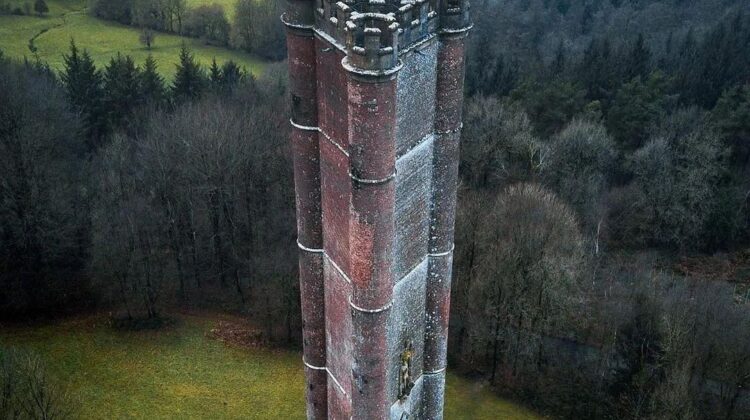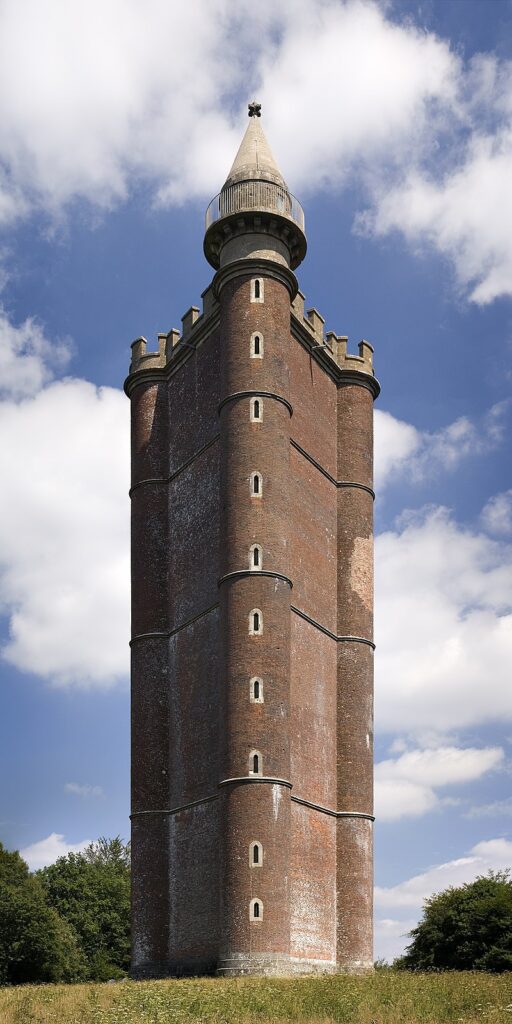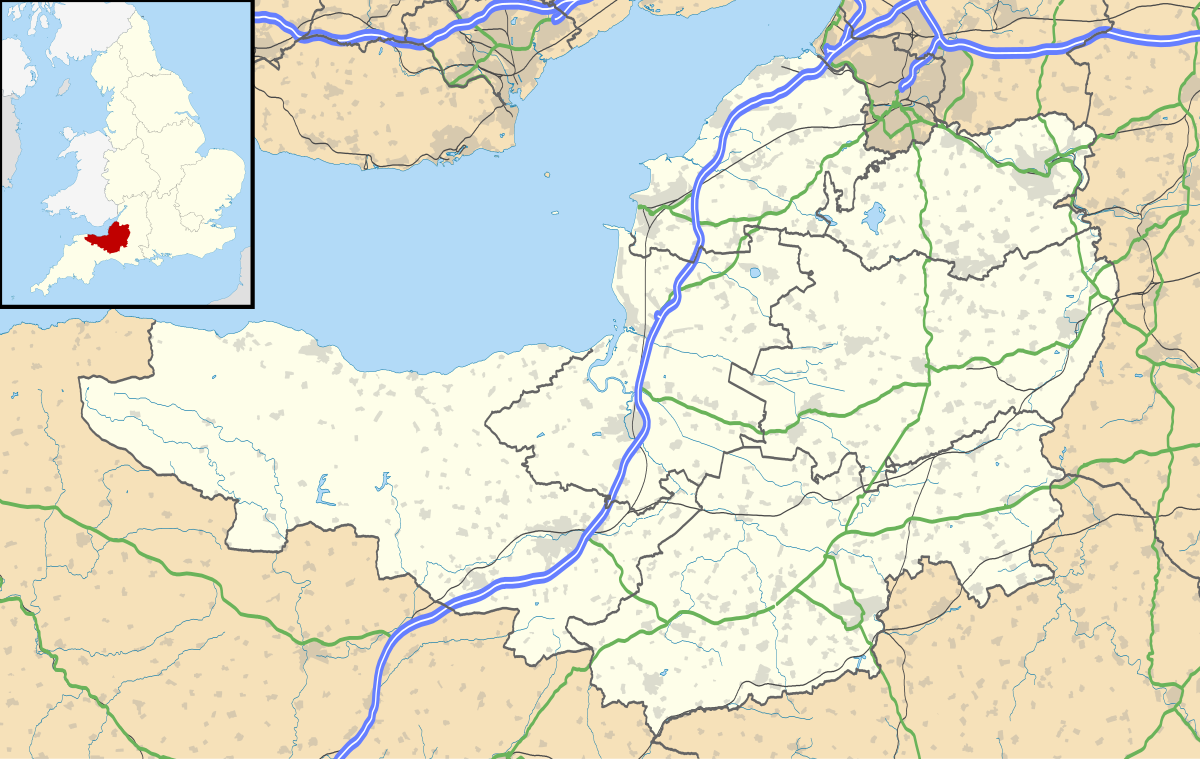

By Contains Ordnance Survey data © Crown copyright and database right, CC BY-SA 3.0, Link
King Alfred’s Tower is a folly located on the edge of the Somerset-Wiltshire border, within the Stourhead estate in England. Belonging to the National Trust, the tower stands on Kingsettle Hill and is designated as a Grade I listed building.
In the 1760s, Henry Hoare II planned the tower to commemorate the end of the Seven Years’ War against France and the accession of King George III. The tower was erected near Egbert’s Stone, believed to be the site where King Alfred the Great rallied the Anglo-Saxons in 878 before the Battle of Edington. Although the tower was damaged by an aeroplane in 1944, it was restored during the 1980s.
The triangular tower is 49 metres (161 ft) high, has a hollow centre, and can be climbed by means of a helical staircase in one of the corner projections. A statue of King Alfred and a dedication inscription are also located on the tower.
Location
The tower is located near the historic site of “Egbert’s Stone,” where, according to legend, King Alfred the Great of Wessex rallied the Saxons in May 878 before the significant Battle of Edington (known historically as the battle of Ethandun). The battle resulted in the defeat of the Danish army led by Guthrum the Old. Additionally, the tower marks the starting point of the Leland Trail, a 28-mile (45.1 km) footpath that runs southwest to Ham Hill Country Park.
History
The banker Henry Hoare II (1705–1785) conceived the project to build the tower in 1762. The tower’s purpose was to commemorate the end of the Seven Years’ War against France and the accession of King George III.
Designed by Palladian architect Henry Flitcroft in 1765, the tower’s construction began in 1769 or early 1770 and was completed in 1772. The total cost of the project was estimated to be between £5,000 and £6,000. Although there may have been some delay in construction due to difficulty in obtaining the bricks.
In addition to its commemorative function, the tower was intended to serve as an eye-catcher for those touring the parkland of the Stourhead Estate. When the tower was only 15 feet (4.7 m) high in April 1770, Hoare is quoted as saying, “I hope it will be finished in as happy Times to this Isle as Alfred finished his Life of Glory in then I shall depart in peace.”
The tower suffered damage during a foggy day in 1944, when a Noorduyn Norseman aeroplane crashed into it, causing the death of the five American aircrew and damage to the uppermost 10 metres (33 ft). It was designated as a Grade I listed building in 1961.
Restoration work was undertaken in 1986, which included the use of a Wessex helicopter to lower a 300-kilogram (661 lb) piece of masonry onto the top. The statue of King Alfred was also restored at this time, with his missing right forearm replaced. Christopher Hussey described Alfred’s Tower as a monument to the genius of English landscape, and to a man who deserves to be remembered as among the great benefactors of the English scene.
Architecture

he tower is a triangular structure over 40 metres (131 ft) high with a girth of 51 metres (167 ft), and each of its three corners has a round projection. The centre of the tower is hollow, and to prevent birds from entering, a mesh has been added at roof level. Visitors can reach the viewing platform, which offers a panoramic view of the surrounding countryside and has a crenellated parapet, by climbing a 205-step spiral staircase at the corner farthest from the entrance. The tower is made of brick with Chilmark stone dressings and is topped with an embattled parapet.

The south-east face of the tower features a Gothic-arched entrance door, a statue of King Alfred, and a stone panel with an inscription (see below). This is the face that most visitors see first when walking from Stourhead Garden or from the nearby car park.
Inscription
Around the Stourhead estate are several inscriptions. The one on the tower was drafted in 1762 and installed in 1772. The stone tablet above the door on the east face of the tower reads:
ALFRED THE GREAT
AD 879 on this Summit
Erected his Standard
Against Danish Invaders
To him We owe The Origin of Juries
The Establishment of a Militia
The Creation of a Naval Force
ALFRED The Light of a Benighted Age
Was a Philosopher and a Christian
The Father of his People
The Founder of the English
MONARCHY and LIBERTY


Most Interesting i followed a series that began with Aurhur’s father and ended with this great battle. It cemented King Aurthur’s success in the future. By Dane’s its Viking that were intertwined with Englanders. There is much I don’t know about his life, I do know that his fathers dream of England came true with the young man’s mental maturity.